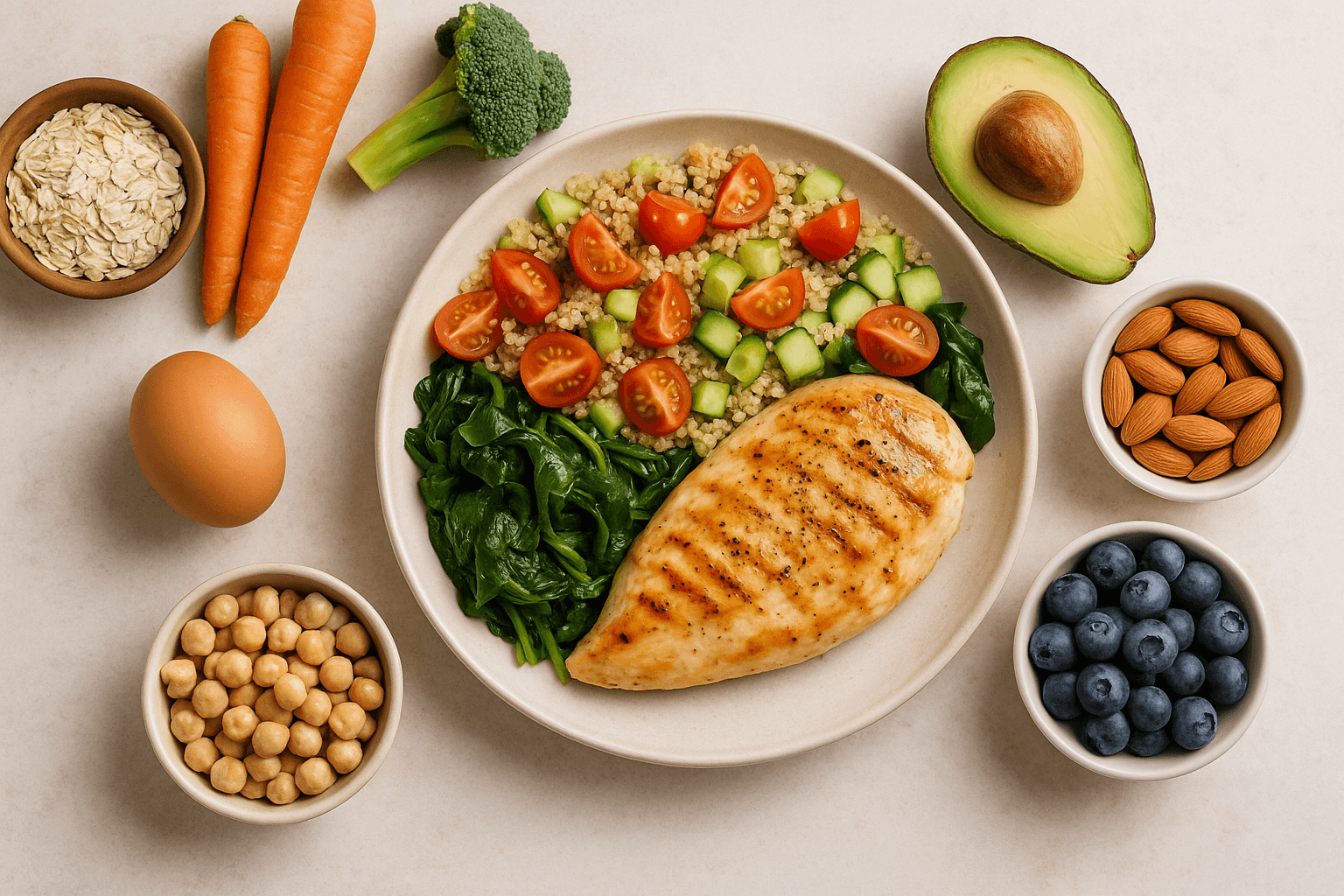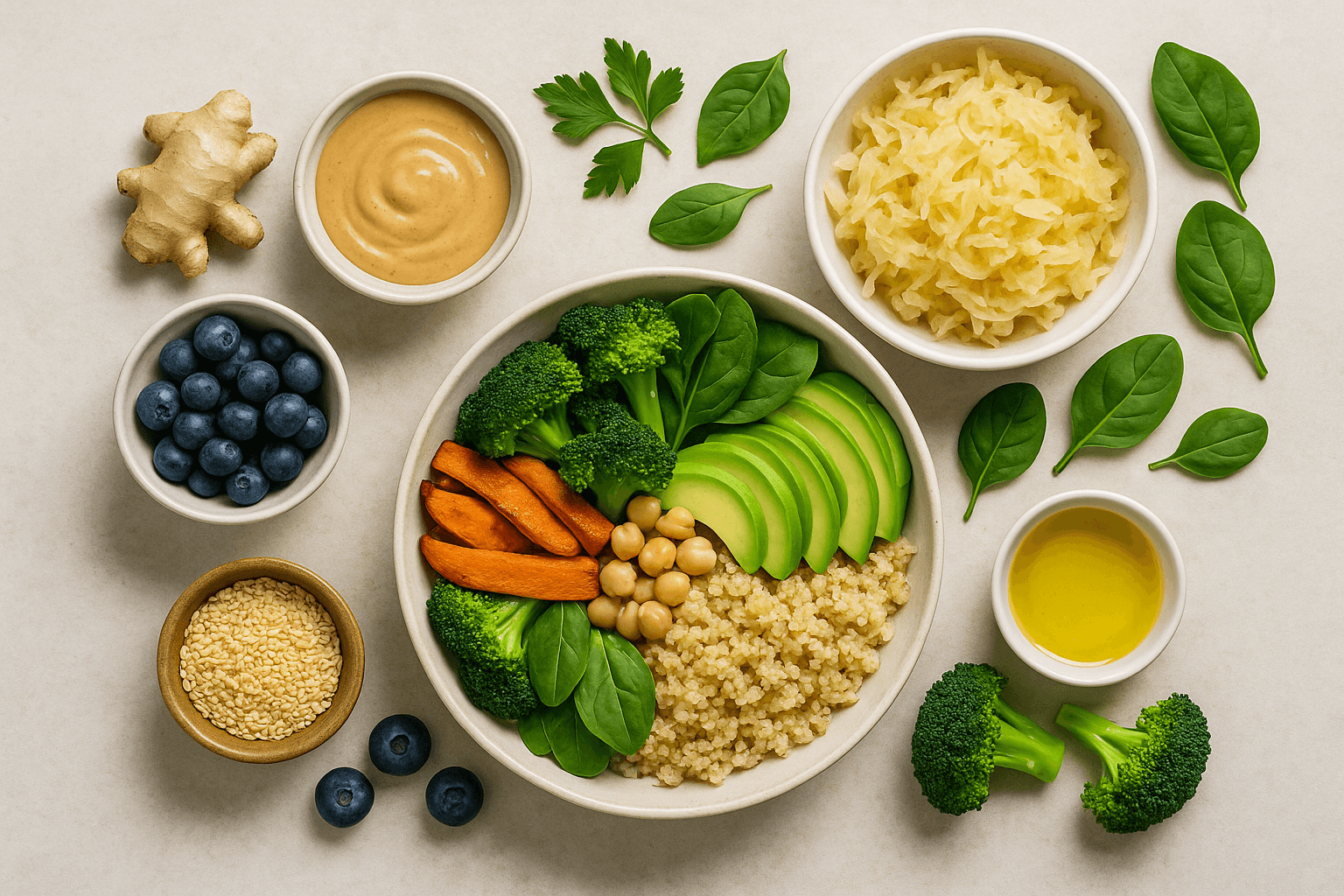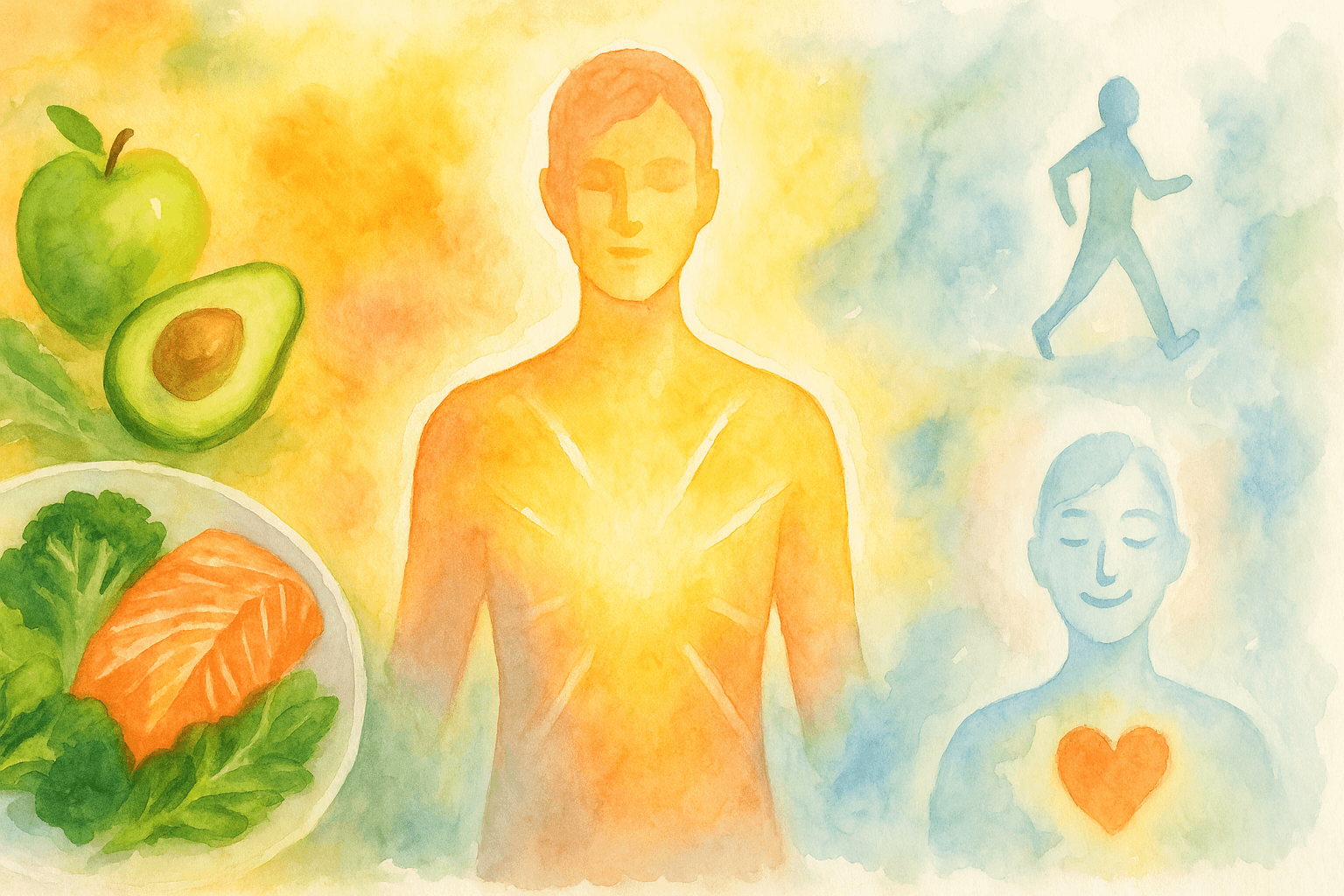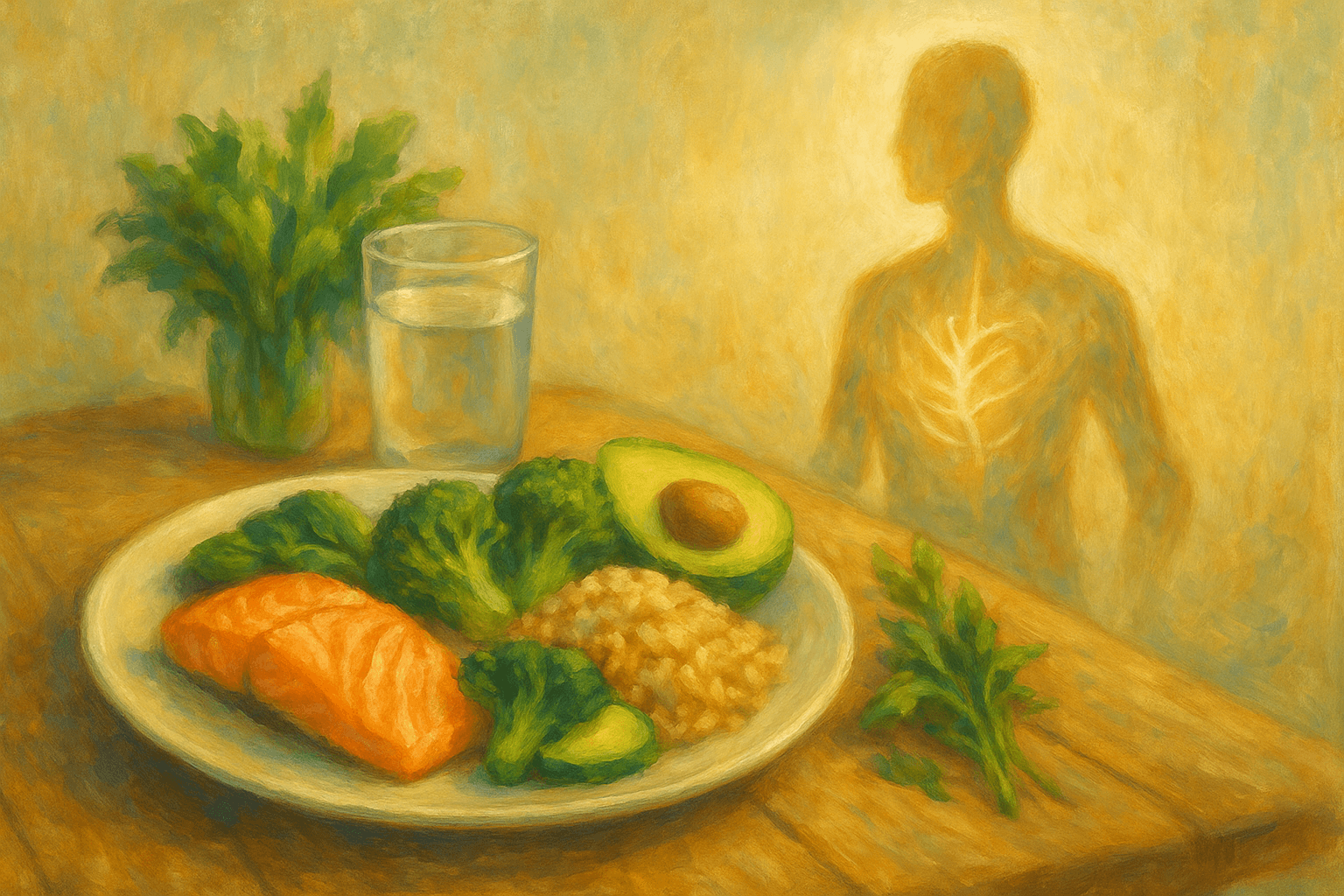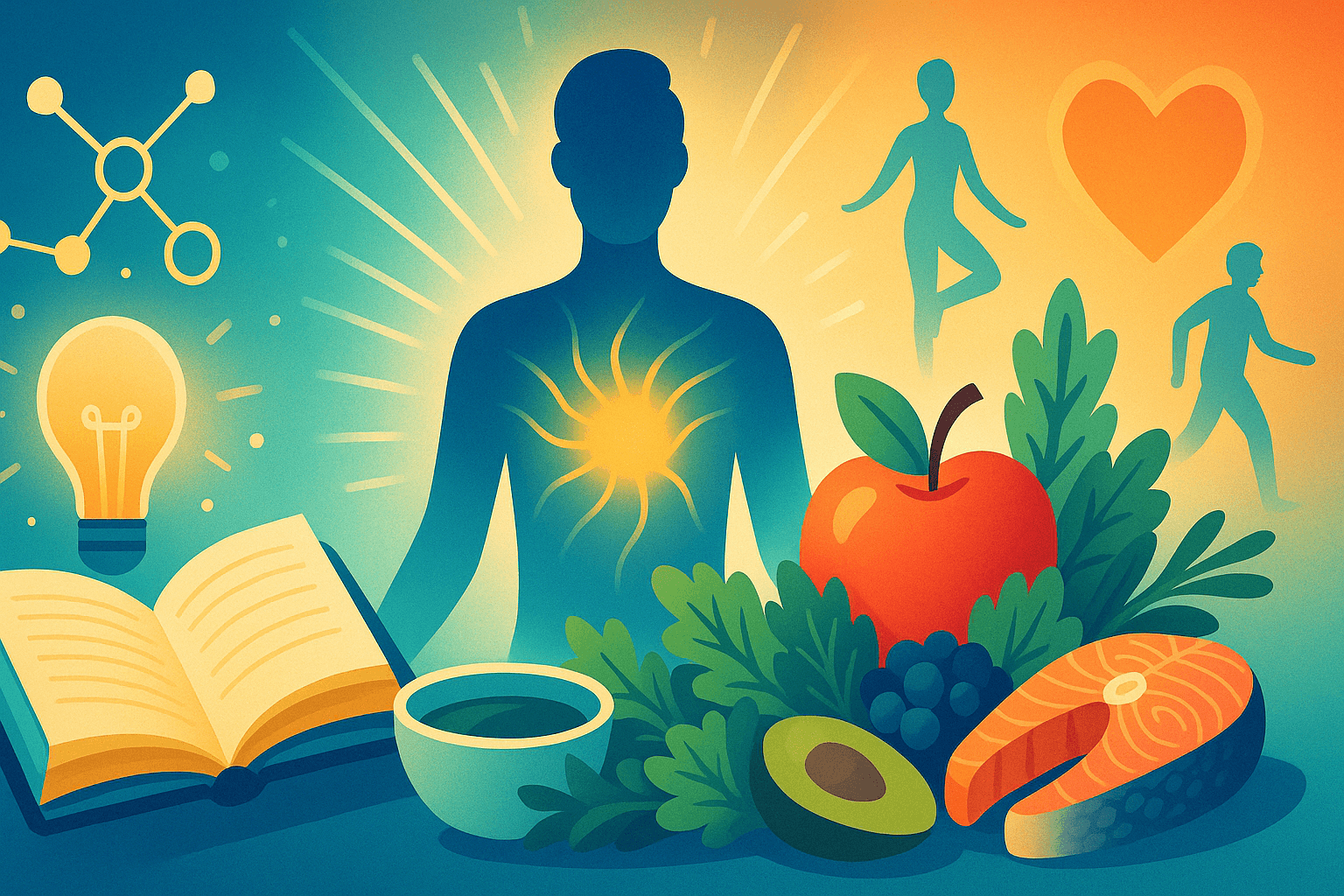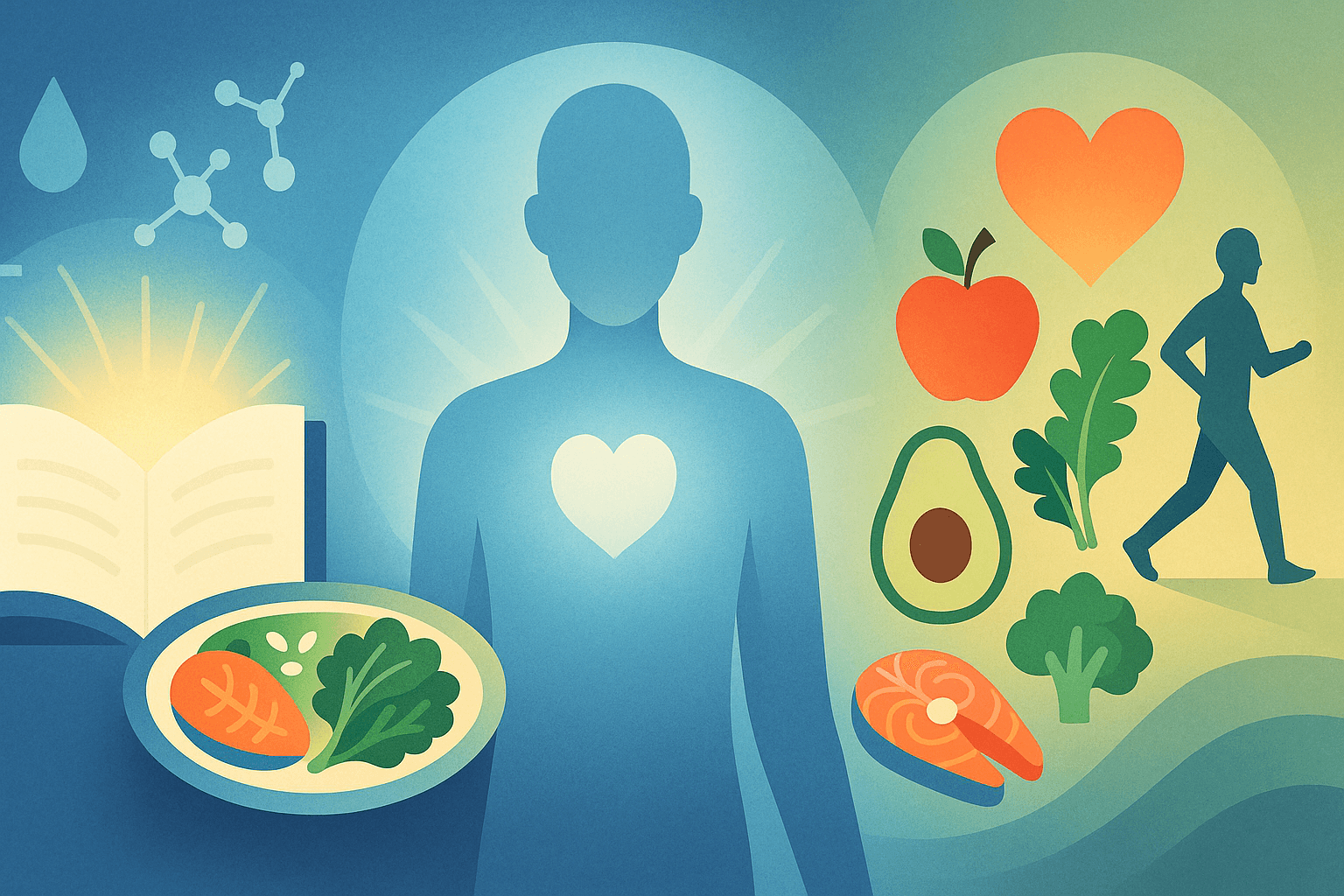Diabetes Unlocked: Science, Myths, and the Real-World Path to Vibrant Living
Published on August 26, 2025

Let's rip back the curtain on diabetes once and for all — because having this condition doesn’t have to be about deprivation, restriction, or adherence to strict rules. In reality, you can take diabetes from the status of a daily struggle and transform it into an asset that supports strength, flexibility–and even joy. Whether you’re newly diagnosed, have been managing diabetes for years or are caring for a loved one who is living with the condition, we’ve designed our products and services to help make your life easier so that you can feel empowered – not overwhelmed. My job as a dietitian is to demonstrate for you how much there really is possible — through the consistent application of science, the creation and reinforcement of smart habits, and honest-to-goodness self-compassion. Your best days are unquestionably ahead of you.
What Is Diabetes? Beyond the Headlines
At its heart, diabetes is about how your body manages simple sugar: the kind you eat. When everything is in balance, the hormone insulin serves like a “key” to allow glucose (sugar) from your blood into your cells. Diabetes throws that system out of whack — but exactly how, and why, varies by the type.
Type 1 diabetes is an auto-immune condition, usually diagnosed in childhood or young adulthood. Here the immune system assaults the insulin-producing cells of the pancreas, so that body can no longer make its own supply of insulin. It can be a lot, but managing it means learning to work with insulin that will never hold your dreams back for you’re planning on being an athlete, traveler or even chef. What counts is focus, collaboration and making adjustments along the way as you grow.
Cause and Effect of Diabetes Type 2 diabetes is a multi-faceted amalgam of genetics, the environment, and lifestyle. The body becomes resistant to insulin (so the “key” doesn’t turn as well), and in some cases, insulin production can decrease. Type 2 is prevalent — and, unfortunately, on the rise globally — but many people can manage or even reverse it with early intervention through diet, activity levels (i.e. exercise), stress reduction and in some cases medication. There is no room for blame and shame here; knowledge and action are the pathways to results.
It’s gestational diabetes, which happens during pregnancy and typically goes away after a baby is delivered. But it’s a warning sign that the mother and child will both face an increased risk of type 2 diabetes down the road. Caring for it well could help a woman to have a healthy pregnancy, and would provide the formative environment of health that can stick around forever.
Prediabetes is the warning sign that blood sugar, though not yet high enough to constitute diabetes, has started rising abnormally. It is an excellent chance: Studies have demonstrated that even moderate weight loss, better eating and regular movement can significantly lower type 2 diabetes risk — sometimes returning blood sugar levels to normal.
Untreated diabetes can increase the risk of heart disease, kidney damage, nerve problems and vision issues. But here’s the uplifting truth: with today’s science, support and proactive care you can head off most complications — have a long span of years free from health worries in which to learn or retain new skills.
The True Benefit of Nutrition in Diabetes
Banish the tired stereotype of “diabetic food” as bland, boring and unsatisfying. According to contemporary nutrition science, there is no one perfect “diabetic diet.” The eating pattern that’s best for you is the one that your life and culture allow, but most crucially, it’s what you can enjoy.
Carb Smarts: It’s quality, not just quantity
Carbs can be so misunderstood, and they are mistreated. You don’t have to be afraid of them; you just need to select and employ them wisely.
Good carbs: Opt for whole grains such as quinoa, brown rice, oats and barley, along with legumes (beans), lentils, fruit and colorful vegetables. These foods offer fiber, vitamins and minerals that help to slow digestion and promote long-lasting fullness. Fiber is a best friend for blood sugar balance and gut health.
Smart swaps: Minor dietary changes, like substituting white bread with whole wheat flaxseed or reaching for an apple instead of Downing a glass of juice can help reduce your blood sugar and cravings substantially over time. Your body wins, no matter which one you choose.
Fiber focus: 25 to 38 grams a day. These high-fiber edibles slow the absorption of glucose, support gut microbes that have been linked to immunity and lower cholesterol, plus help you feel full longer — so healthy eating becomes very doable.
Avoid the “no carbs” trap. It comes down to the correct carbs, amounts and timing for your individual lifestyle.“The right kind of carb can give you energy that won’t fade after an hour.
Plate Power: The Diabetes Plate Method plate
There's no need to count calories and carbs. Just use the simple tools inside this guide for better blood sugar control!
Don't want to deal with complex meal plans and strict tracking? Your new BFF: the diabetes plate method.
Non-starchy vegetables — think leafy greens, peppers, tomatoes, cucumbers mushrooms and broccoli Fill half your plate with nonstarchy veggies. These are the foods that are extremely nutrient-dense, ultra low in carbohydrates and they fill you up without spiking blood sugar.
A quarter of your plate is for lean proteins: grilled chicken or fish, tofu and beans — including black, lima or pinto (yes!) eggs. Protein helps muscle repair, provides sustained energy and keeps blood sugar stable.
The last quarter is reserved for whole grains or starchy vegetables — like brown rice, whole grain pasta, sweet potatoes or corn. This part helps keep your energy stable and prevents eating too much.
Don’t forget a smidgen of healthy fat — avocado, olive oil, some nuts or a drizzle of dressing. Fats enable you to absorb nutrients, keep your full and satiated and support heart health (which is super-important for everyone with diabetes).
This technique is versatile and visual, perfect for using at home or when you eat out. Making a meal is building a balanced plate, not tracking every crumb.
Timing and Consistency
There are few-but-important routine parts of blood sugar management that are not talked about very much, meal-timing being chief among them. When you eat is just as important for your health as what you eat.
Regular meals: Your body can keep glucose in a healthy range if you eat at regular times and don’t skip meals (especially if you use insulin or other blood sugar-lowering medication). Three square meals (with the option for healthy snacks) keeps you from spiking and crashing.
Smart snacking: Look for snacks with a combination of carbs and protein or fats — say, apple slices with nut butter, or hummus and veggies. This combination of fat and fiber slows digestion and flattens blood sugar.
Personal rhythm: There is no hard and fast rule. Establish a rhythm to fit your energy, hunger (appetite), work and medication regime.
Structure, after all, is something that provides stability and when you’re not sure what to do next (or at first), it’s good for your body.
Hydration and Alcohol
Hydration is the silent aspect of good health. Dehydrating raises blood sugar, taxes the kidneys and make you cranky.
Make water your default drink of choice.
Avoid sweet soda, sweet tea and sports drinks — they can cause blood sugar to rise swiftly while contributing empty calories. Herbal teas and sparkling water work well too.
Alcohol: If you drink, be careful. It can elevate or lower blood sugar, sometimes unpredictably — particularly when you mix it with insulin and certain other medications. Always drink with food, be moderate in your amount and check blood sugar more often.
Movement: The Unsung Hero
If healthy food is the engine, physical activity is what gives it power while you’re making your journey with diabetes. And you don’t need to be an athlete — movement is for everyone.
Every little bit helps: 10-minute strolls after meals can reduce post-meal blood sugar surges, help digestion and lift the spirits.
Rotate your activities: Aerobic activity (walking, cycling, swimming), strength work (weightlifting or body-weight exercises) and flexibility training (yoga, stretching) all benefit the body in different ways. Strength building also becomes more crucial, as your muscles are better at using glucose even when you’re resting.
Be prepared: If you are on insulin or certain medication, have immediate access to a source of fast-acting carbohydrate in case your blood sugar goes low. Pay attention to how your body responds when taking part in new exercises, and discuss adopting a wellness routine with your healthcare team if it’s something you’re considering.
Shoot for 150+ minutes of moderate activity per week. Don’t worry if you can’t achieve that right this moment, but every additional step is a success!
Exercise isn’t just for blood sugar — it also contributes to cardiovascular health, mental well-being and strong bones, helps us sleep better and improves our overall resilience.
Demolishing Diabetes Myths
“You can never eat sweets.” False! Dessert and balanced diet, when you plan out the portion sizes it can definitely have a place in motivation. The key is to view sweets as a periodic treat, paired with meals and offset by fiber or protein — not an everyday indulgence.
“Fruit is off-limits.” Absolutely not. Whole fruits are packed with fiber, antioxidants and vitamins. Opt for lower-glycemic varieties, like berries, apples and citrus (and check portion size). The sugar concentration in fruit juice and dried fruits is high, so keep it rare.
“All carbs are bad.” Carbohydrates are your body’s fuel — particularly for the brain and muscles. The right carbs (whole grains, beans, starchy veggies) provide energy along with vitamins and minerals; the wrong ones (soda, white bread, candy), not so much.
“It’s your fault.” Blame and shame are no way to improve health. Genetics, environment and countless other factors beyond your influence are involved. The true priority should be in finding and taking that one small step, after another — so you can feel better because of feeling good within your own skin.
The Science: What’s Proven to Work?
Mediterranean, DASH and plant-based diets: These are all loaded with vegetables, beans and nuts as well as whole grains and healthy fats — using plenty of seasonings to keep blood sugar in check while reducing heart disease risk and helping maintain a good weight. Flexibility and variety are key.
Carb counting and plate method: Both are strategic yet doable ways to keep blood sugar in line, meals as enjoyable (and stress free) as you deserve.
New technology: Continuous glucose monitors, or CGMs and smart insulin pens offer real-time feedback that can help you better tailor your care as well as identify patterns and make rapid adjustments.
Weight loss is good: Shedding even 5–10% of your body weight can improve blood sugar and reduce medication requirements — in some cases it actually puts early type 2 diabetes into remission.
Stress and sleep: Elevated levels of stress, poor quality or not enough sleep can lead to more difficulty controlling blood sugar. And greater cravings for food and insulin resistance with too little cortisol at the wrong time will ensure that excess gears are engaged in your body’s glucose defense army when you’re trying to use those very same carbohydrates as fuel.” Make stress reduction, mindfulness and getting sufficient restful sleep your priorities.
Thriving With Diabetes: Learn How to Take Charge of Your Body to Balance Your Sugars and Improve Your Lifelong Health
Build your crew: You, a Registered Dietitian (RD), Certified Diabetes Educator (CDE) if accessible, an informed M.D. are the team and supportive friends and family is part of this support community’s backbone. Diabetes is a road easier traveled with companions and support.
Track your victories: Whether it’s an app, plain ol’ pen and paper or the notes application on your phone, note meals and meds taken – as well as overall movement — along with blood sugar readings. That’s how you grow, by noticing what works and what doesn’t.
Keep moving forward: Nobody is perfect, and blood sugar changes will happen. It all comes back to learning from experience, experimenting with other approaches and recognizing every healthy option. YOUR SECRET WEAPON: Progress, not perfection.
Seek community: There are millions of people around the world traveling with you. Join virtually or in person for ideas, empathy and inspiration. There’s strength in shared experience.
Keep an open mind and remain curious: Managing diabetes grows along with your experiences. It never hurts to keep learning, trying the newest foodie fads, taking up new hobbies and incorporating tools or strategies that simplify your life.
And Now A Dietitian's Bottom Line – It Are Not Just About Surviving, But Thriving
Positive Living with Diabetes involves saying yes – to delicious food, friends and family relationships that really matter; hours filled with purposeful activity in your community (and beyond); articles and stories on content specific stuff like continuous blood glucose monitors or exercise strategies you will actually stick too. It’s a celebration of what your body can do and making adjustments as your needs change. Each stride, no matter how modest, counts in the long run. It’s not been an easy road, but so worth it.
And remember: Your diagnosis is not your identity. Armed with science, encouragement and a sense of hope), you can author your own story : one that epitomizes health, strength and vibrant living.



